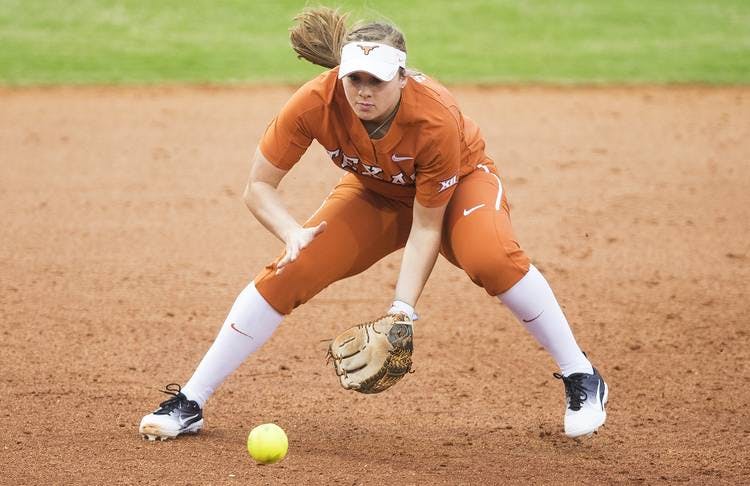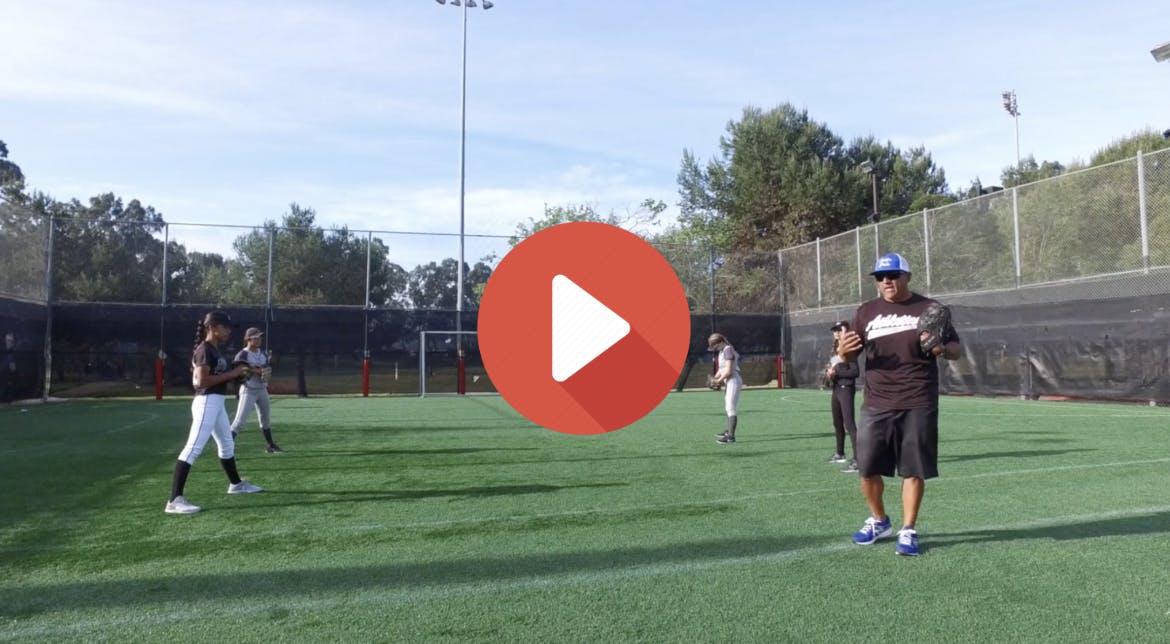Featured courses
- How to Become a Softball Pitcher by Brandon Ogle
- How to Perfect Pitch-Calling For Your Softball Team by Grant Young
- How to Maximize Your Softball Pitcher's Abilities by Grant Young
- How to Create a Softball Team’s Offensive Mindset by Grant Young
- Three Competition-Based Hitting Drills For Your Softball Team by Grant Young
- Three Great Drills For Softball Infielders by Grant Young
- How to Find and Develop Elite Softball Pitchers by Grant Young
- How to Create Runs on the Softball Basepaths by Grant Young
- 5 Biggest Mistakes Softball Coaches Make by Brandon Ogle
- 3 Softball Drills To Do At Home by Brandon Ogle

Three Great Drills For Softball Infielders
- By Grant Young
Having a plethora of good infielders in softball is crucial for any team’s success.
Being a good infielder requires both physical and mental components. Having quick reflexes, agility, and a strong arm are all essential for making defensive plays. In addition, good infielders also must be able to anticipate the next play, communicate effectively with their teammates, and have excellent decision-making skills. Their role in preventing runs and helping the team maintain control of the game is vital.
Playing infield in softball can be challenging for several reasons. First, the speed of the game requires quick reflexes and fast decision-making, because the close proximity to the batter also means that there is less time to react to hard-hit balls.
Additionally, fielding ground balls and catching line drives require precise hand-eye coordination and good timing. Furthermore, the pressure to make accurate throws to get the runners out adds to the difficulty of playing the infield. Overall, the combination of speed, precision, and split-second decision-making makes playing infield in softball a challenging and demanding position.
This is why having a series of softball infield drills that can sharpen and continue to finetune your infielder’s skills as a season progresses is crucial for the entire team. While there are a lot of infield drills you can use, Tony Medina has a few drills he swears by — and we highly suggest his expertise.
Coach Medina has been actively coaching Softball for more than 30 years and is the founder of Medina Softball Clinics, which offers weekly schedules of fielding skills clinics in the Los Angeles and Orange County, California area.
Known for offering a high-paced and fun environment, Coach Tony keeps his players challenged and moving, packing in the skills work into every session. Coach Tony has trained countless college, high school, and recreation level softball players in addition to coaching top Nationally ranked travel ball teams.
Coach Medina’s ‘Medina Softball Clinics - Fielding’ course is not only for players but also for teaching coaches about how to elevate their skills and conduct their practices so that their team wins more games when it matters most.
Reaction Drills
Reaction drills are crucial for any softball infield coach’s repertoire because having fast reactions and hand-eye coordination is a must for softball players who play any infield position.
One reaction drill Coach Medina swears by starts with the infielder positioned at one cone, another cone positioned 30 feet directly in front of them, and then a third cone 10 feet behind that, positioned 40 feet away from the player.
From there, the coach will stand at the 30-foot cone and just hit the ball at the infielder while they have a screen behind them.
This will test the infielder’s reactions as they only have a few split seconds to catch the ball headed their way. After enough repetitions of this, the coach will then move back to 40 feet and do the same thing.
30 feet is the correct starting distance because that’s the closest an infielder would ever be to the hitter (when a corner infielder is preparing to field a sacrifice bunt).
When doing this drill, the coach should be making sure that their players are getting into their ready stance with their feet pointed directly forward.
If you are dealing with younger softball players, you might want to use a tennis racket and tennis balls for this drill rather than a bat and softball to ensure that your players stay safe.
Quick Hands

Just like how having fast reactions is important when playing in the infield, having quick hands is crucial for the same seasons.
One drill Coach Medina loves is what he calls the ‘Inside Inside Drill’. This will require two players at first base with another two players (ideally shortstops or other middle infielders) at second base.
The drill starts with the coach rolling a ground ball to the first base player from about 10 feet away. The player will field the ball and then turn to make a throw to second base. From there, the player standing on second base will catch the ball, make a quick and clean transfer, and deliver a firm and accurate throw back to the first base player.
This simulates a double-play scenario where there’s a runner on first base and a ground ball is hit to the first baseman.
When inspecting this drill, the coach should make sure that their players are communicating to each other that the throws between them should go to the inside of the bag (hence the drill’s name). In addition, the coach will want to see the infielders at second base catch the ball smoothly and go straight into their transition without too much movement of their feet.
Double Plays
More often than not, it’s up to a middle infielder’s preference as to whether they want to step on a bag and then step off, or step over the second base bag when turning a double play.
However, there are some scenarios where the infielder must have a specific one of these two maneuvers to evade a sliding baserunner or turn the double play as quickly as possible. This is why Coach Medina runs a drill where he has infielders practicing both types of turns.
For this drill, a coach will stand out ten feet directly in front of the infielder, who is a couple of steps behind second base. The coach will then underhand toss the ball to the infielder, who will receive it while simultaneously stepping on second base with their left foot. From there, they’ll step back and deliver a throw to first base.
Next, the infielder will come across the bag with their left foot staying on the bag and their right field going to the ball while receiving the catch. After catching it, they’ll step in front of the bag and then deliver a throw to first base.

